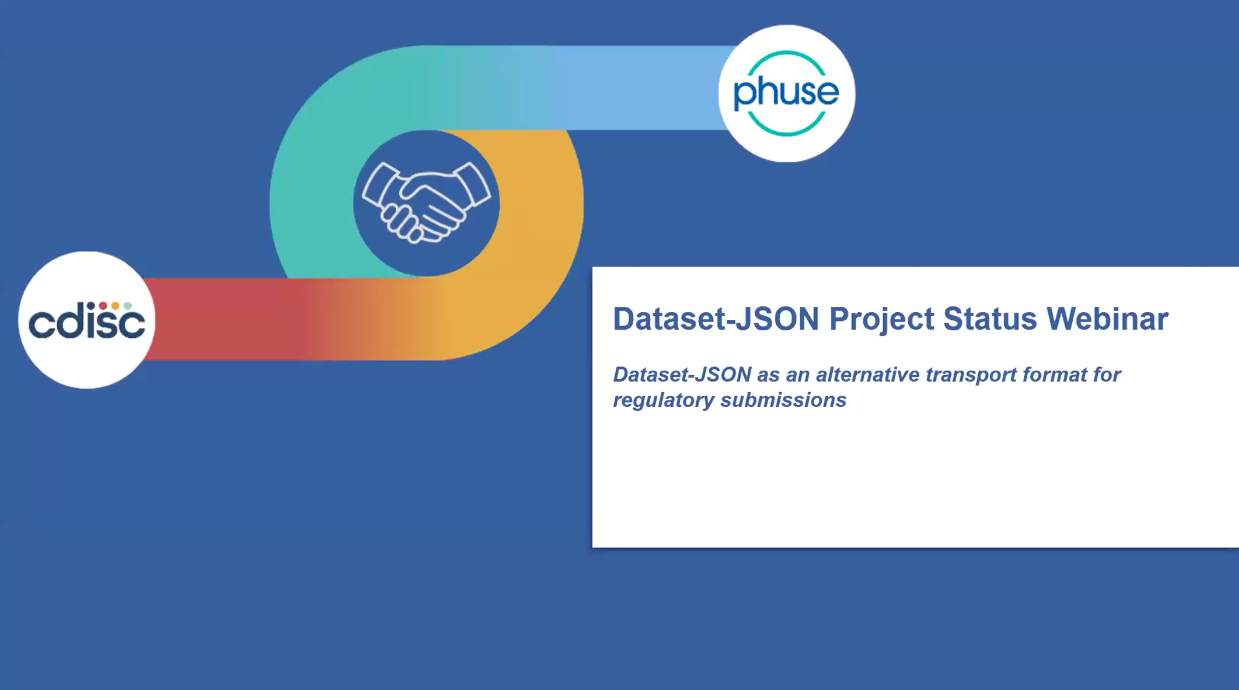Project Scope | |
The scope |
for the project covers twin objectives: |
|
|
|
NOTE that deprication of XPT and adoption of advanced Dataset-JSON is a long-term goal and outside the scope of this project.
To this end, the scope of the project can be split into four:
Industry Adoption
- High-level enagagement with industry
- Selling the sizzle! The ‘why’ not the ‘how’
- Making the business case for the sceptics, not only the early-adopters
Regulatory Acceptance
- Building confidence one small step at a time
- Dataset-JSON as drop-in replacement for XPT
- Testing, proof-of-concepts, pilots
Standards Development
- Long-term vision and philosphy
- Moving beyond limitations of XPT
- Maintaining backward compatability
Technical Implementation
- Education based on ‘just use the tools’
- Hackathons, hands-on experience and documentation
- Open-source, language-agnostic
|
| Sub Teams |
|---|
1. Pilot Submissions Report
2. Business Case
3. Technical Implementation
4. Strategy for Future Development
|
The SAS Transport v5 (XPT) format dates from 1989 and was first available as part of SAS version 5. Since that time, there have been many changes to the industry with respect to the process for submissions and the approaches to data curation and manipulation – but none to the format itself.
The XPT specification is controlled and publicly documented by SAS Institute, who consider it a non-proprietary format.
Dataset-JSON is an alternative, modern dataset format that addresses the limitations of XPT and is published as part of the CDISC ODM v2 standard under an open-source MIT licence.
The challenge in moving from XPT to Dataset-JSON is twofold:
| Project Impact |
|---|
The XPT file format is outdated and imposes limitations on submission data due to the lack of modern features – for example, XPT files are limited to US ASCII Character encoding, have restricted variable names/sizes, inefficient use of storage space, use a non-extensible tabular structure and lack any integrated metadata. |
The impact of overcoming these limitations will be seen initially by regulators; however, by far the bigger impact will be seen in the medium to longer term, where, by lifting the restrictions of XPT, and moving to Dataset-JSON, new standards will be able to take advantage of these enhanced capabilities, and drive efficiencies, consistency and re-usability across the clinical research data life cycle. |
| Project Leads | |
|---|---|
Sam Hume, CDISC | |
Stuart |
Malcolm, Veramed |
Jesse Anderson, FDA | |
| Nicola Newton, PHUSE Project Assistant |
| ||||||
|---|---|---|---|---|---|---|
|
Objectives & Deliverables | Timelines |
|---|---|
PHUSE Team formation Engaged with collaboration partners (CDSIC, FDA etc.) | Q2 2023 |
Initial technical/ regulatory deliverables CSS workshop – Workstream roundtable | Q3 2023 |
| Industry deliverables (PHUSE EU Connect) | Q4 2023 |
| Standards deliverables | Q1 2024 |
All project deliverables published CSS workshops – Project findings and recommendations | Q2 2024 |
| Resources |
|---|
| Summary of the pilot findings to date and recommended solutions |
| Pilot participation testing and reporting instructions |
Dataset-JSON Webinar Please find the recording and presentations from the Webinar that took place on 1 February. | |
|---|---|
Introduction, presented by Stuart Malcom, Veramed | |
| Pilot Submissions Status Update, presented by Sam Hume, CDISC | |
| Technical Implementation Topics, presented by Jesse Anderson, FDA | |
| Business Case, presented by Marguerite Kolb, Johnson & Johnson | |
| Strategy for Future Development, presented by Nicole Thorne, BMS | |
| Status | ||||
|---|---|---|---|---|
|

